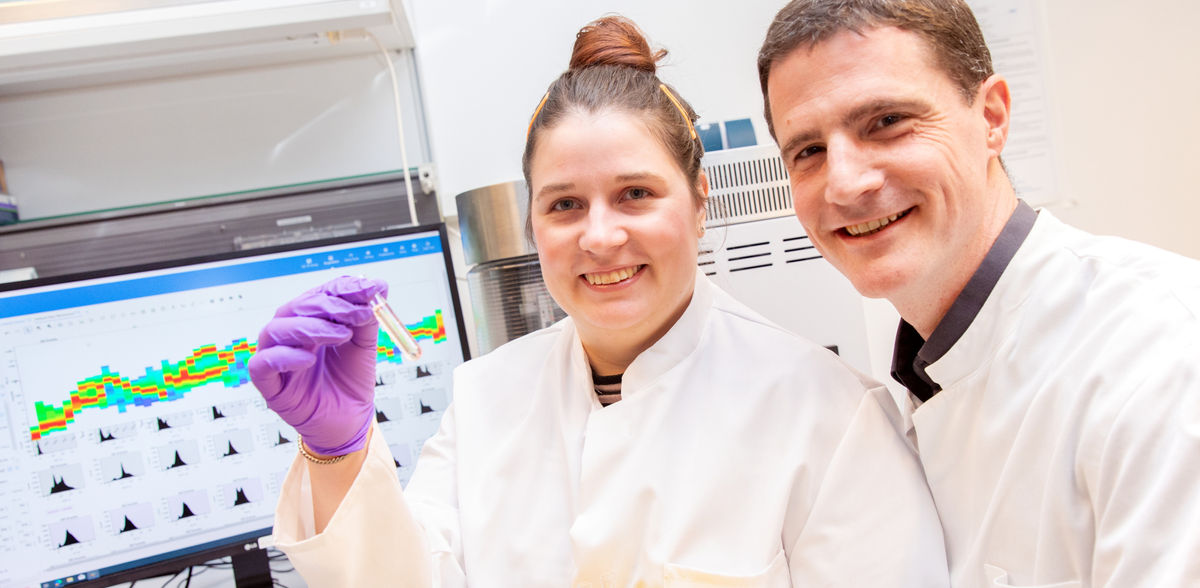Possible tumour marker found for the development of hepatocellular carcinoma
Cancer cells leave an "imprint" on natural killer cells
A research team at the MHH is comparing changes in natural killer cells of the innate immune defence system in chronic hepatitis C sufferers as a risk factor for the later development of hepatocellular carcinoma (HCC).
Hepatocellular carcinoma (HCC) is a malignant liver tumour that develops from degenerated liver cells. HCC usually develops in a severely damaged liver, in which the tissue is destroyed and scarred. Such liver cirrhosis is caused, among other things, by an infection with the hepatitis C virus (HCV). The risk of liver cancer is therefore significantly increased for those chronically infected with HCV. Highly effective drugs - so-called direct-acting antivirals - have been available for several years. They inhibit the multiplication of HCV in the liver, which means that the virus is usually completely eliminated from the body. However, cirrhosis of the liver remains and with it the risk of developing hepatocellular carcinoma. Patients must therefore keep attending follow-up examinations after HCV has been cured.
Researchers at the Department of Gastroenterology, Hepatology, Infectiology and Endocrinology at Hannover Medical School (MHH) have now found a way to predict the risk of HCC. The team led by Dr Norman Woller and Clinic Director Professor Dr Heiner Wedemeyer has discovered that the so-called natural killer cells (NK cells) in patients who developed HCC after treatment with direct-acting antiviral drugs were altered in comparison to the NK cells of non-diseased patients. These NK cell signatures could serve as tumour markers to identify patients at risk of HCC in the future before the cancer breaks out. The results of the study have now been published in the renowned scientific journal "Hepatology".
Cancer cells leave an "imprint" on NK cells
NK cells are part of the innate immune system. They eliminate virus-infected cells and tumour cells and are one of the first lines of defence in the fight against infections and cancer. "In our liver, the proportion of NK cells is between 30 and 50 per cent of all immune cells, so they probably play a central role in maintaining the immunity of liver tissue," says Dr Woller. Unlike the defence cells of the acquired immune system, NK cells cannot react specifically to antigens. However, they are influenced by the experiences they have when confronting the tumour. "The cancer cells leave an imprint on the NK cells, so to speak," explains the biochemist. The researchers hypothesised that this signature could influence the function of the NK cells and that these NK cells may play a role in eliminating the cancer cells, which is why some chronic hepatitis C sufferers developed liver cancer after a few years despite having cured the viral infection.
The research team was aided in their investigations by the clinic's own large collection of blood samples from HCV patients. "We were able to access eight different cohorts that cover a large time span from the development of HCC to the diagnosis and onset of the cancer," emphasises Professor Wedemeyer. The clinic also has a state-of-the-art cell sorter. The spectral FACS analyser (Fluorescence Activated Cell Sorting) enables the counting and analysis of individual cells in a liquid stream. "We first labelled selected biomarkers on the NK cells with different fluorescent dyes and then looked to see which markers we found more frequently in which cohorts," says Sophie Anna Engelskircher, PhD student and first author of the study.
TIM-3 and CD38 proteins as possible tumour markers
The analysis showed that the proteins TIM-3 and CD38, which were largely absent in healthy controls, were particularly abundant on NK cells from liver cirrhosis patients who later developed HCC.TIM-3 is a factor for regulating the immune response, CD38 influences cell activity. "These two proteins are clearly linked to the later development of liver cancer and could therefore be used as possible tumour markers to help assess the risk of HCC development in patients with liver cirrhosis after HCV cure in good time," says Dr Woller.
Original publication
Sophie Anna Engelskircher, Po-Chun Chen, Benedikt Strunz, Carlos Oltmanns, Tijana Ristic, Solomon Owusu Sekyere, Anke R M. Kraft, Markus Cornberg, Thomas Wirth, Bernd Heinrich, Niklas K Björkström, Heiner Wedemeyer, Norman Woller; "Impending hepatocellular carcinoma diagnosis in cirrhotic patients after HCV cure features a natural killer cell signature"; Hepatology, 2024-2-20

























































